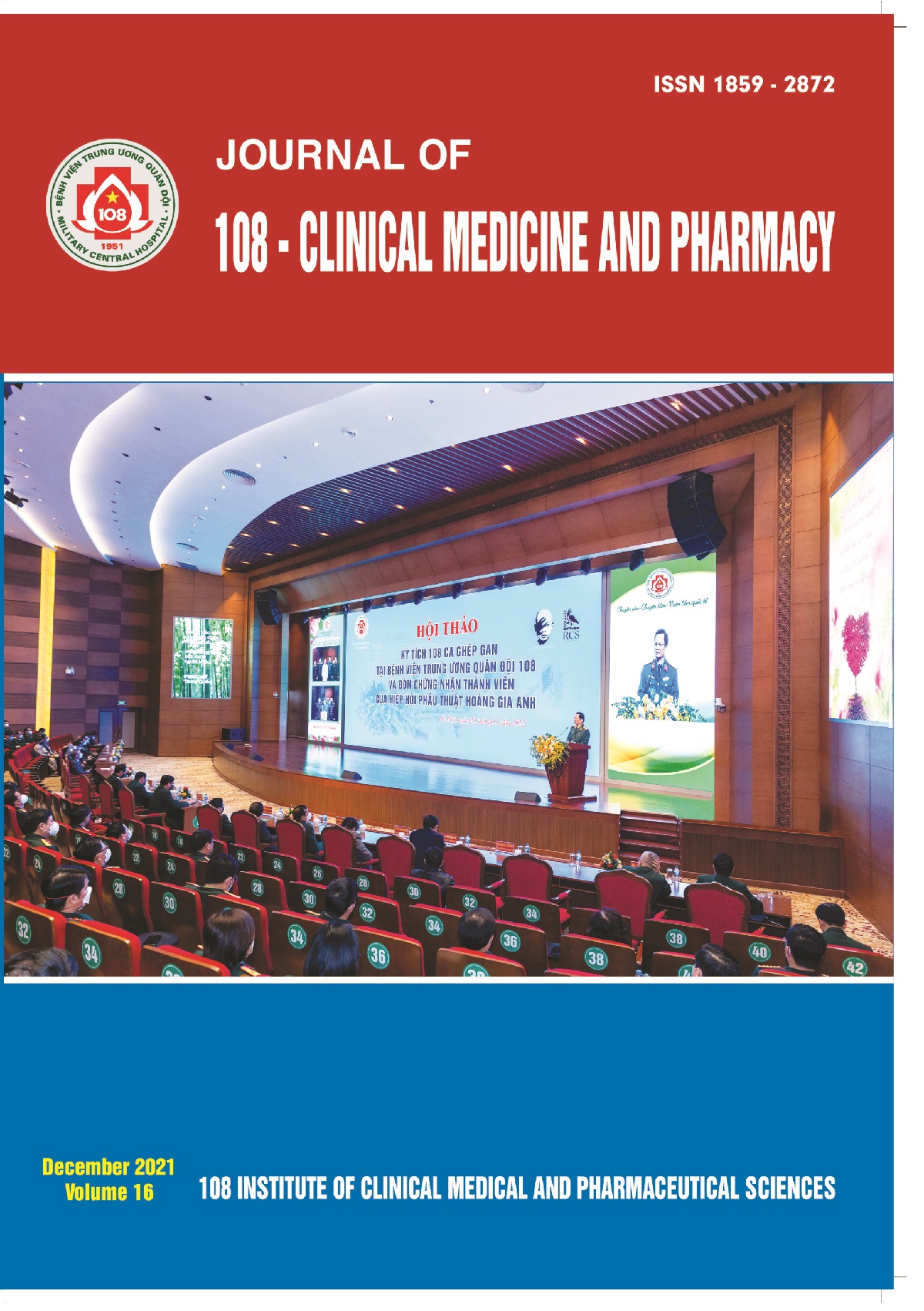Concordance between fine needle aspiration cytology and post operative histopathology in thyroid nodules
Main Article Content
Keywords
Abstract
Objective: To analyze the concordance between fine needle aspiration cytopathology (FNAC) and post-operative histopathological (POH) reports including characteristics of local invasions and cervical lymph node metastasis (LNM) in thyroid carcinoma at the 108 Military Central Hospital. Subject and method: Retrospective study was designed to analyze 1384 thyroid nodules from 1322 patients who underwent surgery comparing preoperative fine needle aspiration cytology with post-operative histology results at the 108 Military Central Hospital from January 2020 to December 2020, these patients met eligible criteria to have simultaneously FNAC and POH reports. Result: There were (1259/1384) 90.97% cases of thyroid carcinoma in all thyroid nodules with ratio of male/female was 1/4.7, ages from 11 to 85 years old, the peak of malignancy at the group over fifth decade of life and papillary thyroid carcinoma (PTC) generally accounted for (1243/1259) 98.73% of all thyroid carcinomas. There were 6 categories of Bethesda System for Reporting Thyroid Cytopathology (BTS) including categories I, II, III, IV, V and VI; thyroid carcinomas in each category as following 89.09%, 45.10%, 76.09%, 71.05%, 98.93% and 100.00%, respectively. Local and vascular invasions also occurred at the rate of 12.44% in papillary thyroid microcarcinoma (PTMC) and 41.85% in PTC. LNM reached to 7.39% in PTMC, 25.23% in PTC. Conclusion: Most patients with thyroid nodules had FNAC and operated at The 108 Military Central Hospital (from January 2020 to December 2020) were thyroid carcinoma (90.97%) in which PTC accounted for 98.73%, the rate of PTC is very high in any BTS categories, and most of them come from BTS categories V plus VI (72.25%). Surprisingly, PTC occurs in BTS category I unusually reached to 89.09%. Local invasion was generally over 50% (682/1259) and LNM was nearly 30% (319/1259) in the all malignant nodules.
Article Details
References
2. Melo-Uribe MA, Sanabria Á, Romero-Rojas A et al (2015) The Bethesda system for reporting thyroid cytopathology in Colombia: Correlation with histopathological diagnoses in oncology and non-oncology institutions. Journal of Cytology 32(1): 12-16
3. Callender GG, Carling T, Christison-Lagay E, Udelsman R (2014) Surgery for thyroid cancer. Endocrinology and Metabolism Clinics of North America 43(2): 443-558.
4. Cibas ES, Ali SZ (2017) The 2017 bethesda system for reporting thyroid cytopathology. Thyroid 27(11): 1341-1346.
5. Lihan et al (2019) 2108 cases of thyroid cancer cervical lymph node dissection or not. Research square 10: 21203.
6. Renshaw AA, Wang E, Haja J, Wilbur D, Henry MR, Hughes JH; Cytopathology Committee, College of American Pathologists (2006) Fine-needle aspiration of papillary thyroid carcinoma. Arch Pathol Lab Med 130: 452-455.
7. Dideban S, Abdollahi A, Meysamie A, Sedghi S, Shahriari M (2016) Thyroid papillary microcarcinoma: Etiology, clincal manifestations, diagnosis, follow-up, histopathology and prognosis. Iranian Journal of Pathology 11(1): 1-19.
8. Cheng F, Chen Y, Zhu L, Zhou B, Xu Y, Chen Y, Wen L, Chen S (2019) Risk factors for cervical lymph node metastasis of papillary thyroid microcarcinoma: a single-center retrospective study. Int J Endocrinol 2019:8579828
 ISSN: 1859 - 2872
ISSN: 1859 - 2872
